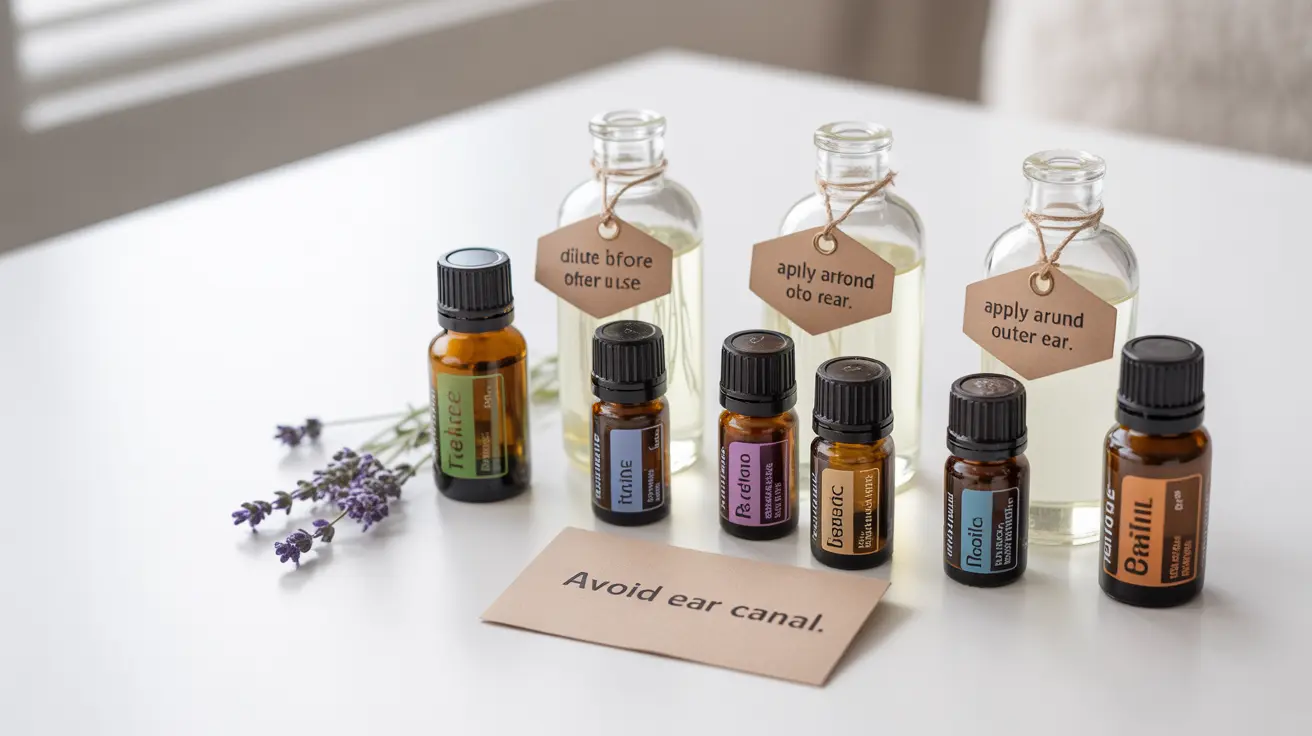When dealing with ear infections, many people seek natural alternatives to conventional treatments. Essential oils have gained attention as a potential remedy, but it's crucial to understand their proper use, effectiveness, and safety considerations before attempting any treatment.
This comprehensive guide examines the use of essential oils for ear infections, including important safety precautions, proper application methods, and when to seek professional medical care instead of relying on natural remedies.
Understanding Essential Oils and Ear Health
Essential oils are concentrated plant extracts that contain active compounds with potential therapeutic properties. While some oils may have antimicrobial or anti-inflammatory effects, their use for ear infections requires careful consideration and proper application techniques.
Common Essential Oils Used for Ear Discomfort
Several essential oils are traditionally associated with ear health:
- Tea tree oil (melaleuca): Known for antimicrobial properties
- Lavender oil: May help reduce inflammation
- Basil oil: Traditional use for ear discomfort
- Garlic oil: Contains natural antimicrobial compounds
Safe Application Methods
Never apply essential oils directly into the ear canal. Instead, consider these safer approaches:
- Dilute with a carrier oil before any application
- Apply around the outer ear only
- Use warm compresses with diluted oils
- Consider diffusion for aromatherapy benefits
Important Safety Precautions
Before using essential oils near the ears, understand these crucial safety measures:
- Always dilute oils properly (typically 1-2 drops per tablespoon of carrier oil)
- Perform a patch test before use
- Keep oils away from the ear canal
- Discontinue use if irritation occurs
- Never use with a perforated eardrum
When to Seek Medical Care
Certain symptoms indicate the need for immediate medical attention:
- Severe ear pain
- Fever above 101°F
- Discharge from the ear
- Hearing loss
- Symptoms lasting more than 2-3 days
- Dizziness or balance issues
Frequently Asked Questions
Are essential oils like tea tree and basil safe and effective for treating ear infections?
While some essential oils have antimicrobial properties, their safety and effectiveness for ear infections aren't well-established through scientific research. They should never replace medical treatment for diagnosed ear infections, and careful dilution and external-only application are crucial for safety.
Can I put essential oils directly into my ear to relieve an ear infection?
No, essential oils should never be placed directly into the ear canal. This can cause serious injury, irritation, or worsen the infection. Only use properly diluted oils around the outer ear area, never inside the ear.
What are the risks and side effects of using essential oils for ear infections?
Potential risks include skin irritation, allergic reactions, chemical burns if used undiluted, and serious complications if oils enter the ear canal. People with sensitive skin, perforated eardrums, or existing ear conditions face increased risks.
How should I properly use essential oils around the ear if I want to try natural remedies?
Always dilute essential oils with a carrier oil (like coconut or olive oil) before use. Apply only to the outer ear area and behind the ear. Consider using a warm compress with diluted oils or aromatherapy diffusion instead of direct application.
When should I see a doctor instead of relying on essential oils for an ear infection?
See a doctor if you experience severe pain, fever, ear discharge, hearing changes, or symptoms lasting more than 2-3 days. Children, elderly individuals, and those with compromised immune systems should always consult healthcare providers first.
Remember that while essential oils may offer complementary support, they shouldn't replace proper medical treatment for ear infections, especially in severe cases or with high-risk individuals.




